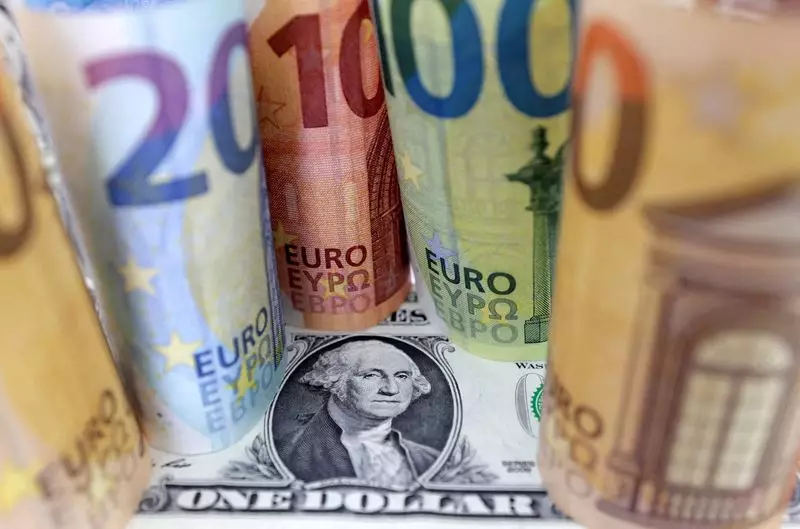In the midst of a turbulent global market, the dollar has managed to find its footing once again. A sudden end to the strong rally in U.S. stocks has created a sense of uncertainty among investors, prompting them to seek safety in the dollar. Additionally, an unexpected fall in British inflation has negatively impacted the pound, leading to a sharp drop in its value. As the markets adjust to these developments, it is essential to analyze the implications and potential outcomes that lie ahead.
Sterling experienced its sharpest decline in two months following the release of British inflation data. The figures showed that inflation had dipped below forecasts, reaching an annual rate of 3.9% in October – its lowest in two years. This unexpected decline has prompted traders to speculate on rate cuts by May, resulting in a 0.7% drop in the value of the pound against the dollar. Analysts, such as Marios Hadjikyriacos of brokerage XM, believe that this data suggests a loss of inflation momentum in the United Kingdom. Consequently, it is predicted that the Bank of England may join the global rate cutting cycle in the coming year.
The sudden surge in risk-aversion across markets can be attributed to heavy selling in the final hour of equities trade on Wall Street. This shift in sentiment has not only lifted the under-pressure dollar from its lows but has also led to the retreat of the Australian and New Zealand dollars from their five-month highs. The Australian dollar, for instance, fell from its highest level since July to $0.6714. Similarly, the New Zealand dollar traded at $0.6257. This market volatility highlights the interconnectedness of global currencies and the impact of geopolitical and economic factors on their value.
While the dollar has been subject to fluctuations, the euro has remained relatively stable, trading at $1.0943. On the other hand, the yen found support at 143.5 per dollar after initially losing ground when the Bank of Japan decided to maintain its ultra-easy policy settings. These contrasting trends demonstrate the unique dynamics within currency markets and the varying factors that influence their movements.
Currency markets are eagerly anticipating the release of the U.S. core personal consumption expenditure (PCE) index, as it is expected to shed light on the state of inflation in the country. Analysts predict a 0.2% rise in the index for November, with the annual inflation rate slowing to its lowest since 2021 at 3.3%. This slowdown in inflation raises concerns that the Federal Reserve may need to ease its policy in order to prevent real rates from rising. However, the market has already priced in significant rate cuts for the upcoming year, leading to caution among investors. As the bond market experiences a massive rally and the dollar index declines, it is crucial to monitor any potential data surprises and the ensuing market reactions.
As the festive season approaches, market liquidity is expected to thin out. This thinning liquidity, combined with the increased likelihood of data surprises, can exacerbate price movements and raise further uncertainties. Analysts, like OCBC currency strategist Christopher Wong, have suggested that adjusting positions and paring back risks ahead of these events is a sensible strategy. It is important to exercise caution in such an environment and remain vigilant in monitoring market developments.
The dollar has managed to regain some strength amidst market volatility and currency fluctuations. The unexpected fall in British inflation and the end of the U.S. stocks rally have influenced the performance of major currencies like the pound, the Australian dollar, and the New Zealand dollar. Additionally, upcoming U.S. inflation data and thinning liquidity are contributing to market caution. As we navigate these uncertain times, it is crucial to carefully analyze market trends and adapt strategies accordingly.


Leave a Reply